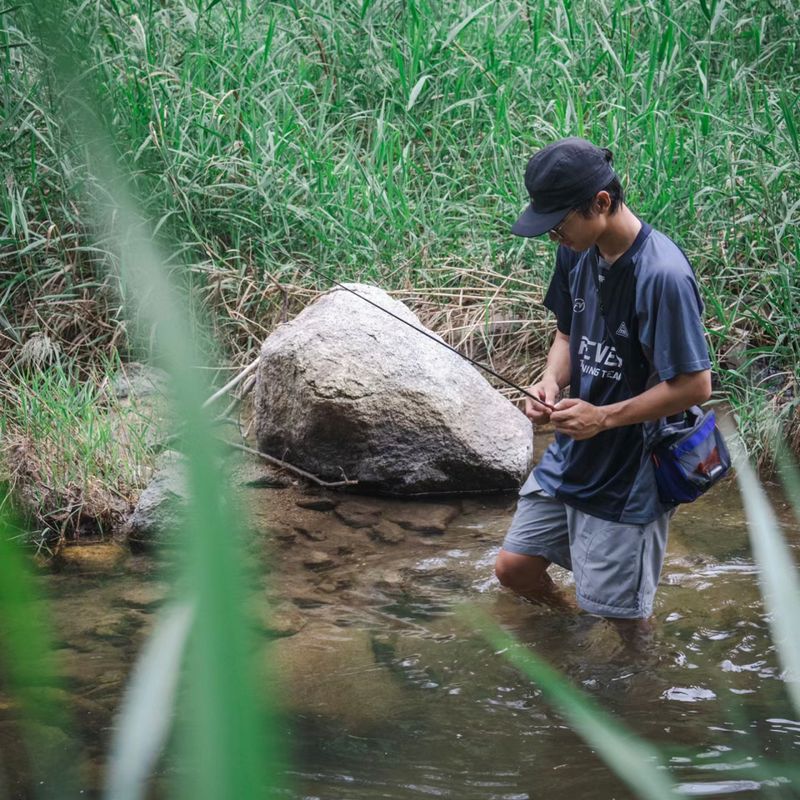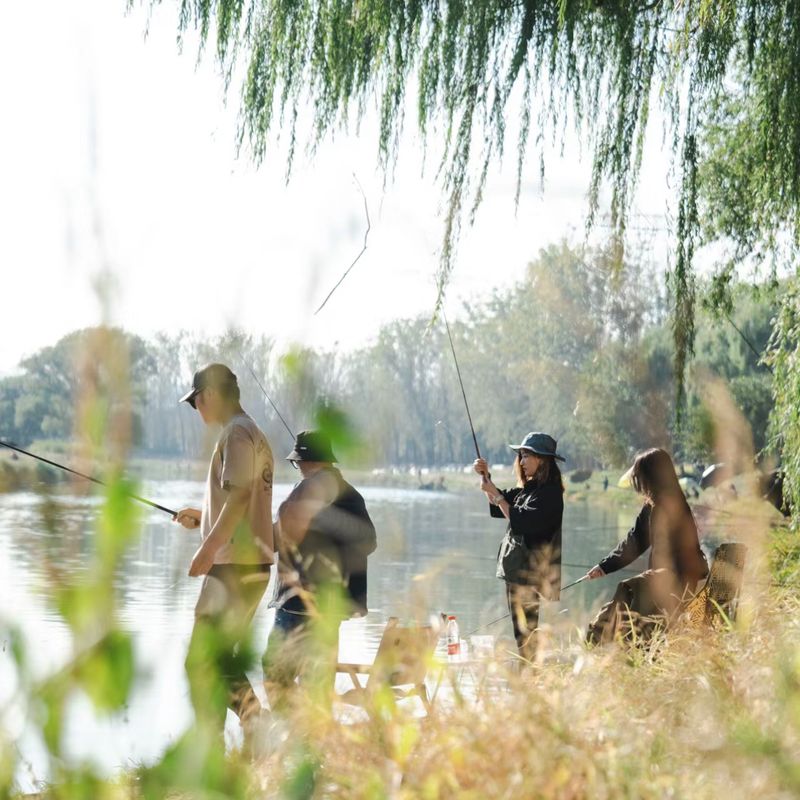Hello, and welcome to "Fishing Basics 101." In this article, I will introduce you to the fundamentals and techniques of microfishing. Whether you're a beginner or someone with a bit of fishing experience, this guide will help you become a master of microfishing. Let's get started!
What Is Microfishing?
Microfishing is a simple and enjoyable way to go fishing. It typically involves catching small freshwater fish like bluegill, sunfish, and carp in lakes, rivers, or ponds. This style of fishing doesn't require a lot of gear, making it perfect for beginners or those looking to relax in their leisure time.
1. Gear Preparation:
- Rod and Line: Choose a lightweight yet durable fishing rod, typically in the 6-10 feet range. The choice of fishing line depends on the size of the target fish, usually opting for a 6-8 lb test line.
- Hooks and Floats: It's recommended to use small hooks, ranging from size 8 to 12. The selection of floats should be based on the depth and current conditions of your fishing spot.
- Bait: Common baits for microfishing include worms, corn, and bread crumbs. Beginners might prefer using worms since they are readily available and attractive to various small fish species.
2. Techniques and Considerations:
- Choosing a Fishing Spot: Microfishing is often done near the shoreline or in areas with submerged vegetation. These places tend to attract smaller fish, creating more opportunities for a successful catch.
- Casting and Reeling: Place the bait on the hook and gently cast your line, allowing the bait to float on the water's surface. Use a slight upward pull to avoid getting your hook caught in vegetation or other obstacles.
- Recognizing Bites: Small fish bites are often less aggressive than those of larger fish, so pay close attention to the movement of your float. Rapid sinking or erratic movement could be a sign of a fish nibbling.
- Hooking and Reeling In: When you're confident a fish is biting, gently lift your rod and start reeling in slowly. Avoid excessive force to prevent the fish from getting off the hook or your line from breaking.
- Handle Fish with Care: Once you've successfully caught a fish, handle it gently with wet hands to remove the hook and release it back into the water. Remember, it's the responsibility of anglers to protect the ecosystem.
Conclusion:
After learning from this guide, I believe you now have a deeper understanding of microfishing. Fishing is an activity that not only helps you relax but also allows you to connect with the beauty of nature. I hope you find joy in the world of microfishing and enjoy the process. Wishing you the joy of a bountiful catch in the waters!



13 comments
* * * <a href="https://www.supertechnical.com/index.php?64476q">$3,222 credit available</a> * * * hs=f15a2ff12f8b2a9839a41f3589981221* ххх*
5guq5p
5guq5p
* * * $3,222 deposit available! Confirm your operation here: https://www.supertechnical.com/index.php?64476q * * * hs=f15a2ff12f8b2a9839a41f3589981221* ххх*
5guq5p
5guq5p
* * * <a href="https://obs.regideso.cd/index.php?gdbmot">$3,222 credit available</a> * * * hs=f15a2ff12f8b2a9839a41f3589981221* ххх*
3h3h21
3h3h21
* * * $3,222 payment available! Confirm your transaction here: https://obs.regideso.cd/index.php?gdbmot * * * hs=f15a2ff12f8b2a9839a41f3589981221* ххх*
3h3h21
3h3h21
* * * <a href="http://uwiapartment.com/index.php?wio6d3">$3,222 payment available</a> * * * hs=f15a2ff12f8b2a9839a41f3589981221* ххх*
m7iy64
m7iy64
* * * $3,222 credit available! Confirm your operation here: http://uwiapartment.com/index.php?wio6d3 * * * hs=f15a2ff12f8b2a9839a41f3589981221* ххх*
m7iy64
m7iy64
📉 💰 BTC Credit: 1.75 BTC added. Claim now >> https://graph.org/Get-your-BTC-09-04?hs=f15a2ff12f8b2a9839a41f3589981221& 📉
nw1x1k
nw1x1k
📣 💼 Balance Notification - 0.8 Bitcoin detected. Complete reception => https://graph.org/ACCESS-CRYPTO-REWARDS-07-23?hs=f15a2ff12f8b2a9839a41f3589981221& 📣
2xfnmv
2xfnmv
* * * <a href="https://botlabs.agency/index.php?j7ckxo">Claim Free iPhone 16</a> * * * hs=f15a2ff12f8b2a9839a41f3589981221* ххх*
sbxnmx
sbxnmx
* * * Unlock Free Spins Today: https://botlabs.agency/index.php?j7ckxo * * * hs=f15a2ff12f8b2a9839a41f3589981221* ххх*
sbxnmx
sbxnmx
* * * <a href="https://grdotech.com/index.php?8bisr7">Win Free Cash Instantly</a> * * * hs=f15a2ff12f8b2a9839a41f3589981221* ххх*
8t5t6q
8t5t6q
* * * Claim Free iPhone 16: https://grdotech.com/index.php?8bisr7 * * * hs=f15a2ff12f8b2a9839a41f3589981221* ххх*
8t5t6q
8t5t6q
🔍 Email- TRANSACTION 1.273769 BTC. Assure =>> https://yandex.com/poll/76RuKke5vYn6W1hp2wxzvb?hs=f15a2ff12f8b2a9839a41f3589981221& 🔍
uiu6la
uiu6la